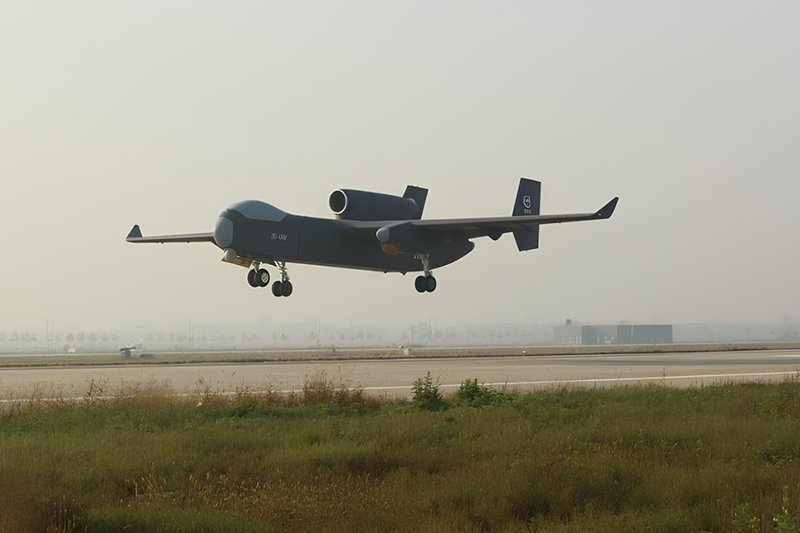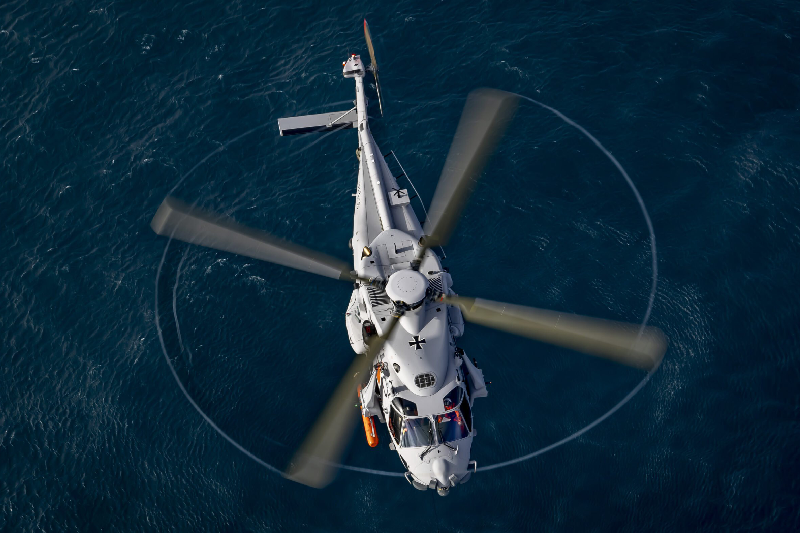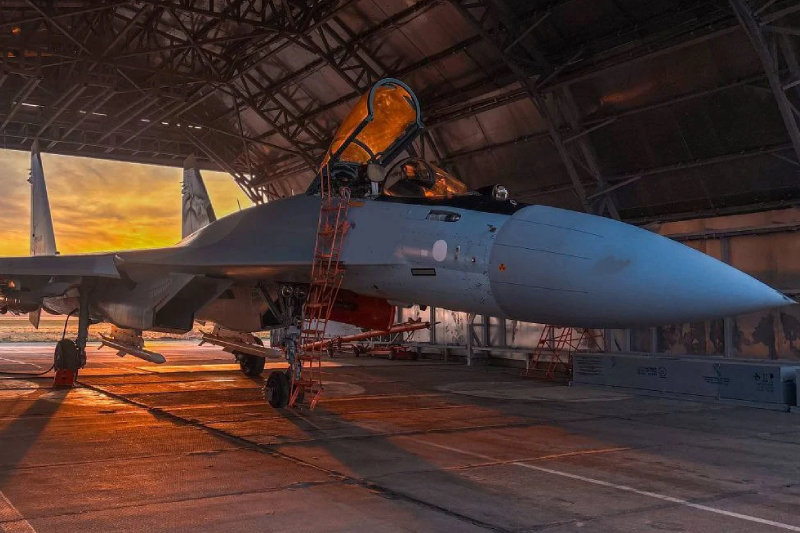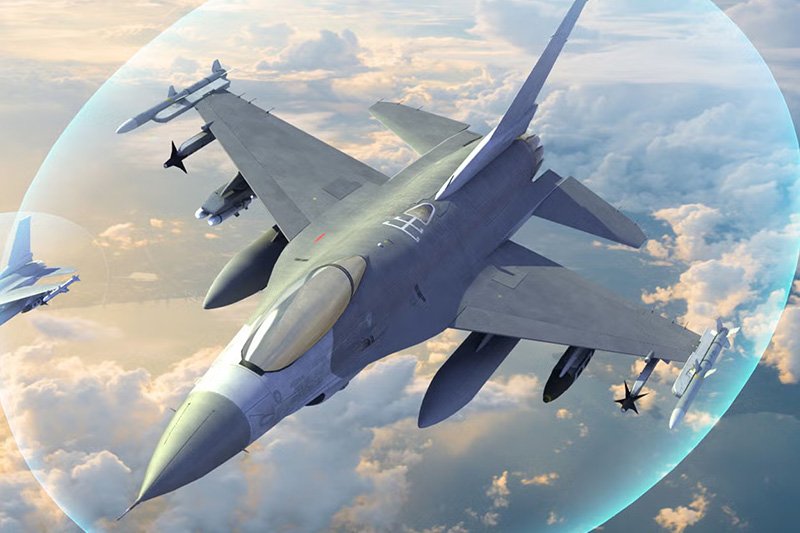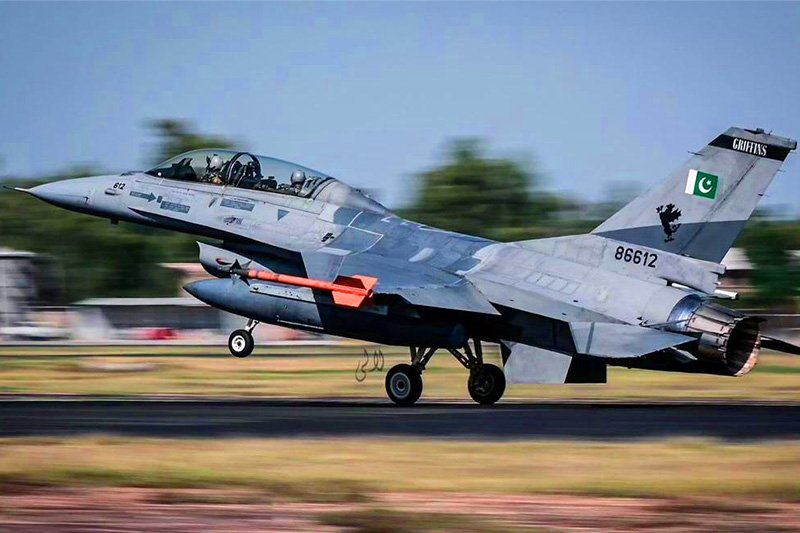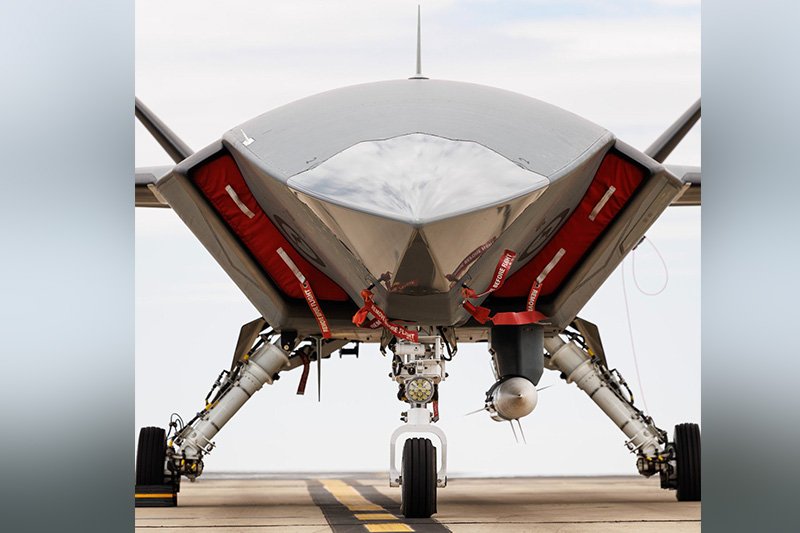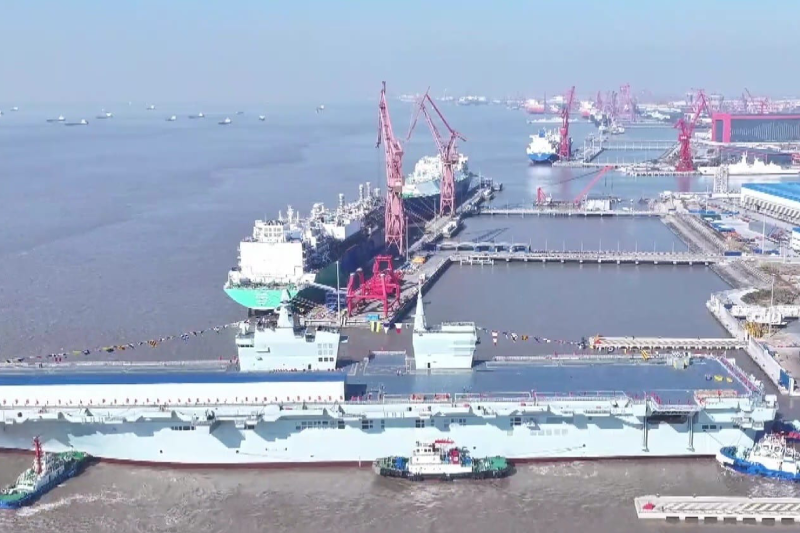China Advances Naval Tech with Type 076 EMALS Test
The catapult aboard China’s massive Type 076 LHD (Landing Helicopter Dock) amphibious assault ship, the “Sichuan,” has been tested for the first time, images that appeared on October 22, 2025 seem to suggest. This significant milestone for China’s Type 076 LHD Sichuan represents a groundbreaking development in amphibious warfare capabilities, as the vessel becomes the world’s first amphibious assault ship equipped with an electromagnetic aircraft launch system. The reported testing of the EMALS catapult on China’s Type 076 LHD Sichuan marks another advancement in the People’s Liberation Army Navy’s modernization efforts and demonstrates China’s growing technological sophistication in naval aviation systems.
Nighttime Testing Configuration
The photos show the vessel repositioned toward the open waters of the Yangtze River, with the launch system uncovered and illuminated at night for testing operations. According to South China Morning Post, a maritime safety notice established a no-entry zone in front of the dock from October 20 to 29 for “underwater activities,” suggesting the shipyard was conducting sled tests of the Electromagnetic Aircraft Launch System (EMALS), during which a weighted metal carriage is launched into the water to simulate aircraft takeoff performance and validate system parameters.
Satellite Imagery Confirms Catapult Integration
The LHD, with a displacement of 40,000 tons making it substantially larger than most amphibious assault ships, was confirmed to have a single catapult on the port-side of its main flight deck when an overhead satellite image of the vessel under construction on June 9, 2024 showed a long empty section that observers concluded would house the catapult installation. Subsequent official images of its commissioning on December 27, 2024, showed the long shed covering the port-side portion of the deck, running lengthwise, again confirming the catapult’s presence and protecting sensitive equipment during construction phases.
Construction Techniques Mirror Carrier Development
Such protective sheds were also previously used to cover the CNS Fujian’s catapults during construction and testing, indicating standardized procedures for electromagnetic launch system integration. That carrier reached a major milestone in September 2025 by successfully launching and recovering the J-35 stealth fighter, J-15T carrier-borne jet, and the KJ-600 AEW&C (Airborne Early Warning and Control) aircraft, demonstrating mature operational capability. The Fujian also underwent a similar test of its EMALS (Electro-Magnetic Launch System) catapult on November 26, 2023, establishing testing protocols.
Global First Establishes
The Sichuan is the world’s only amphibious ship to feature a catapult launch system, representing an unprecedented combination of amphibious assault and fixed-wing aviation capabilities. Previous satellite images at mock test sites have indicated it would carry the GJ-11 Sharp Sword UCAV, a stealthy flying-wing unmanned combat aerial vehicle. That flying-wing aircraft was paraded publicly, together with at least four different types of CCAs (Collaborative Combat Aircraft)/UCAVs, in September 2025, showcasing China’s expanding unmanned systems portfolio.
Optimizes Flight Operations
The ship also features a twin-island design, similar to the Royal Navy’s HMS Queen Elizabeth-class aircraft carriers, which separates navigation and aviation control functions. This configuration optimizes flight deck operations by dedicating one island to ship navigation and the other to air operations management, improving efficiency and reducing interference between these critical functions during complex amphibious operations requiring simultaneous aviation and ship maneuvering.
Test Evidence Aligns With Established Procedures
The unofficial image of the test on the Fujian showed a splash in the water in the harbor, ahead of the carrier’s bow, indicating the impact of the representative test object, usually a weighted sled, launched from the EMALS catapult to validate acceleration profiles. Even without official confirmation, we can safely conclude that the Sichuan has an EMALS-powered catapult, and not a steam-powered one, since China already has a homegrown and functional technology demonstrated on the Fujian. The EMALS on the Sichuan may very well be a derivative of the flattop’s system with modifications for amphibious ship integration.
Vessel Positioning Confirms Test Configuration
In the picture of the Sichuan claimed to represent the catapult trial, the ship is turned and facing away from the pier, along which it is berthed parallel. This positioning could be done to steer the launch trajectory away from other smaller vessels and tugs moored nearby. While we neither see a test object on the deck nor a splash in the water in available images to definitively capture the test moment, the vessel configuration and maritime safety notices strongly suggest testing activities occurred.
Provides Additional Evidence
A piece of evidence supporting the EMALS catapult trial, along with the night-time image of the Sichuan turned away from the pier, was a notice to mariners issued by the Shanghai Maritime Safety Administration. The notice “designated a small rectangular no-entry zone from October 20 to October 29, directly in front of the shipyard’s dock entrance,” said the SCMP (South China Morning Post), establishing controlled waters for testing operations.
Underwater Recovery Operations
The notice to mariners cited daily “underwater activities” within the zone from 9 am to 5 pm throughout the testing period. Given that such tests normally use sleds as test objects that are launched into the water, the “underwater activities” likely refer to the recovery of the test vehicle using divers and specialized equipment. Also, considering the accelerated pace at which the ship has progressed through construction and outfitting, analysts assume it would commence harbour acceptance trials by this year’s end, and sea trials at least before mid-2026.
Taiwan Scenario Drives Operational Requirements
Besides being the largest amphibious assault carrier that would be deployed in a potential Taiwan invasion scenario, along with the Type 075 class particularly for the challenging rocky waters off Taiwan’s eastern shores, another common consensus among military analysts is that the new LHD would carry the GJ-11 flying-wing UCAV as its primary fixed-wing asset. While Taiwan’s western shores facing China’s eastern seaboard could easily be reached by the several civilian RoRo (Roll-On/Roll-Off) vessels frequently shown in exercises, the choppy seas eastward, deeper in the western Pacific, can only be safely navigated by purpose-built naval vessels like the Type 075 and the Type 076.
Diverse Rotary-Wing Fleet Provides Flexibility
The rotary-wing fleet could consist of a diverse mix of helicopters including the Changhe Z-8 heavy transport, Z-9 utility helicopter, Z-18 derivative, Z-20 medium utility helicopter, Z-10 attack helicopter providing fire support, or even the Z-21 heavy-class attack helicopter currently under development. If used in a light aircraft carrier role, it could theoretically carry the J-15T carrier variant, the J-15DT electronic warfare aircraft, or the J-35 stealth fighter. That possibility however seems unlikely, given that the Type 076 Sichuan’s width is evidently constrained for operating such large fighters efficiently.
Unprecedented Amphibious Aviation Concept
The presence of arrestor cables, the EMALS catapult and the existence at carrier test sites of dummy mock-ups of the GJ-11 certainly make for an interesting, first-of-its-kind amphibious attack concept combining traditional amphibious assault with advanced fixed-wing aviation. Turkey’s TCG Anadolu, another amphibious attack ship with a ski-jump ramp, meanwhile has hosted dozens of take-offs and landings by the TB3 Bayraktar UCAV, but does not have arrestor cables or an EMALS catapult, limiting it to VTOL-capable aircraft.
Organic Strike Capability
How the GJ-11 might be operationally employed in this scheme of things remains to be fully revealed. However, the most plausible explanation could be that the amphibious carrier requires its own organic unmanned ISR (Intelligence, Surveillance, Reconnaissance)-strike capability with a LO (Low-Observable) aircraft, without having to depend on assets from the PLARF (PLA Rocket Force), the PLA Navy’s other three carriers, or land-based aviation. This independence provides tactical flexibility and reduces coordination complexity during complex amphibious operations.
Historical Precedent Informs Operational Doctrine
An amphibious landing facing fortified beachhead defenses and entrenched positions—itself the last stage in an escalatory naval blockade meant to pressure Taiwan’s leadership, and which would be undertaken if diplomatic pressure proves insufficient would be an extremely costly affair, if the Normandy landings are anything to go by historically. Modern defenses with precision anti-ship missiles, smart mines, and networked sensors make contested amphibious operations even more challenging than historical examples.
Don’t miss this: China’s New Combat Jet Makes First Test Flight
Surveillance and Fire Support Role Anticipated
The GJ-11, or whichever aircraft the arrestor hooks and the catapult are ultimately designed for, would likely have a role in High-Altitude Long-Endurance (HALE)-type aerial surveillance missions. Observing beachheads and inland defenses with advanced sensors, the aircraft could possibly ‘soften’ some defensive positions through precision strikes, before releasing amphibious tanks and troops for the assault phase. This reconnaissance-strike capability would prove invaluable for reducing casualties and increasing operational success probability during the most dangerous phase of any amphibious operation.
Keep connected with us at Facebook, Twitter, YouTube, Instagram & TikTok for latest defense happening around the globe.
Discover more from International Defence Analysis
Subscribe to get the latest posts sent to your email.


